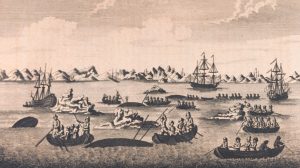Welbeck Abbey is the subject chosen for Edwinstowe Historical Society’s illustrated talk on 15th February, being one of the 4 ducal seats contained in the area referred to as “The Dukeries”.
In November, last, the Society participated in St Mary’s Christmas Tree Festival, the chosen theme being “Sherwood Forest and Edwinstowe’s Historical Celebrities”. In view of the interesting personalities associated with the village over the past 200 years, the decision was taken to use their details for display on the notice board in the Forest Corner Craft Centre.
Website additions have been made to the following sections: Schools (Sunday School Treat Sept. 1914) ; Pubs and Hostelries (register of Victuallers’ licences granted for the village) ; WW1 and WW2 ( an update of the fallen); St Mary’s Church (a prickly object found in the Church turned out to be a barrel organ attachment).
A search through old newspaper reports can often result in interesting news. This happened recently when one of the Society’s researchers discovered that in the early 1800’s one of a Newcastle shipbuilder’s vessels was named “Edwinstow”. In 1803 she was licensed by the East India Company as a whaler to proceed to the Southern Whale Fishery. The following year she was reported whaling in the Pacific before being detained by the Spanish at Concepcion and sold as a prize. Final reports note that she “burnt” in 1807. During her life she had acted as a tender to a convoy carrying the 65th regiment of foot, (2nd Yorkshire, North Riding) destined for foreign service, and on one occasion rescued survivors from sinking ships caught in a gale in the Bay of Biscay.

One might question why a vessel from Newcastle would bear the name “Edwinstow”. Perhaps it may have been due to the fact that Newcastle once formed part of Northumbria – its King was Edwin. He marched south to fight King Penda of Mercia and was killed at the battle of Hatfield, possibly near Edwinstowe, at a small hamlet called Cuckney, in AD 632. In AD 633 Edwinstowe (Edenstou) which was a small settlement within the forest bounds, was named after King Edwin of Northumbria.
 Edwinstowe Historical Society
Edwinstowe Historical Society